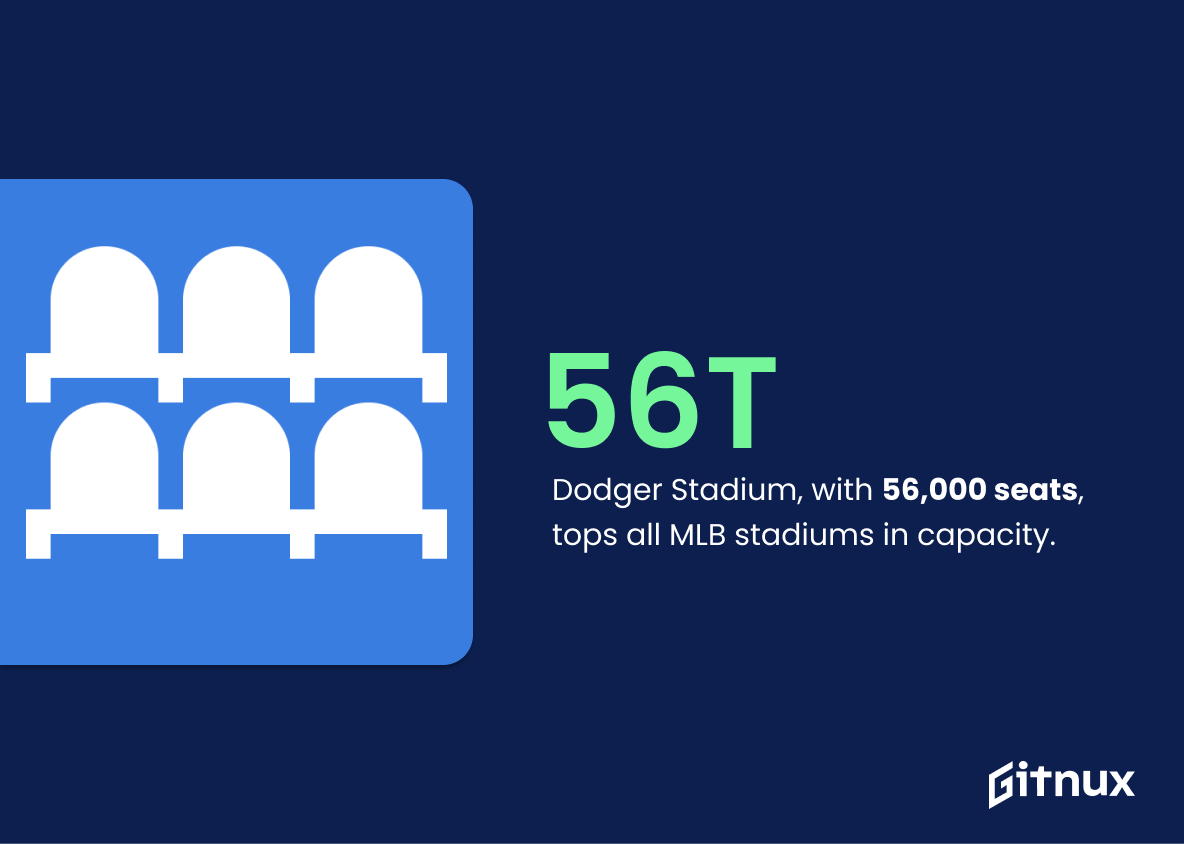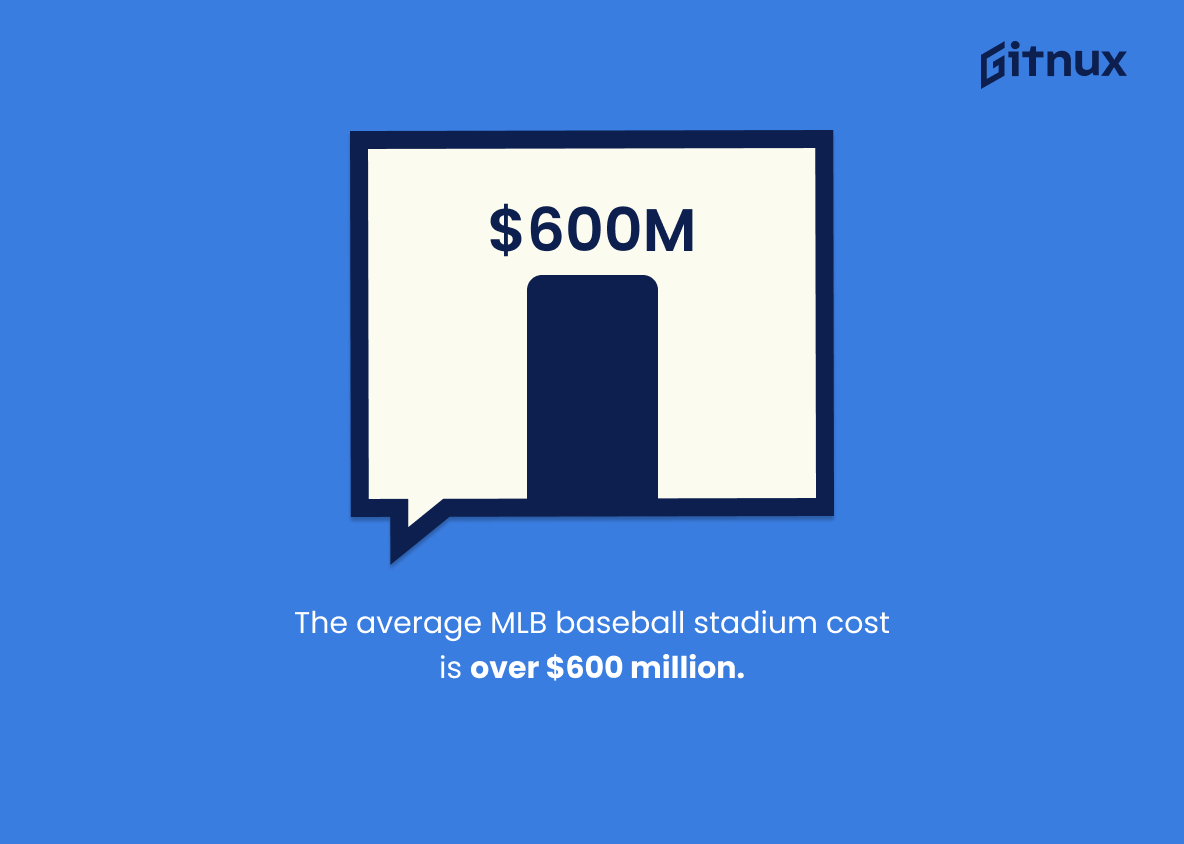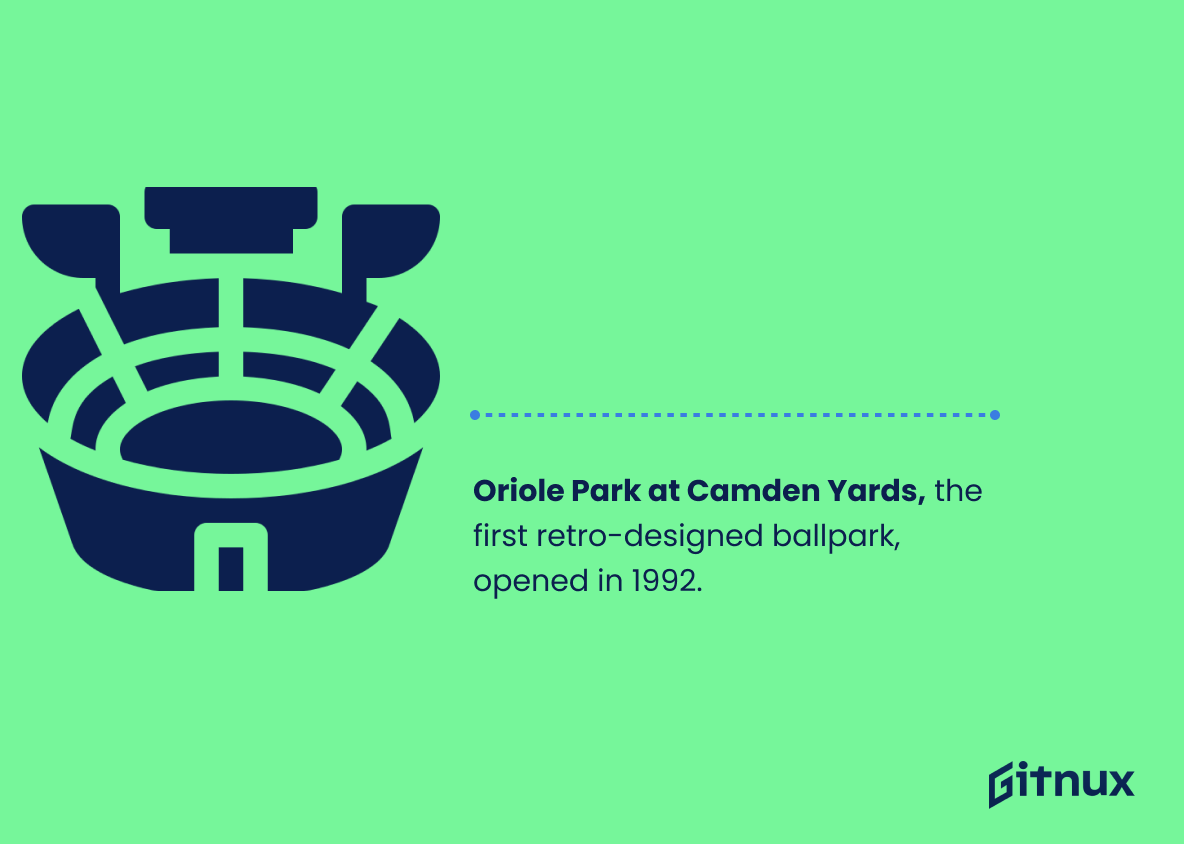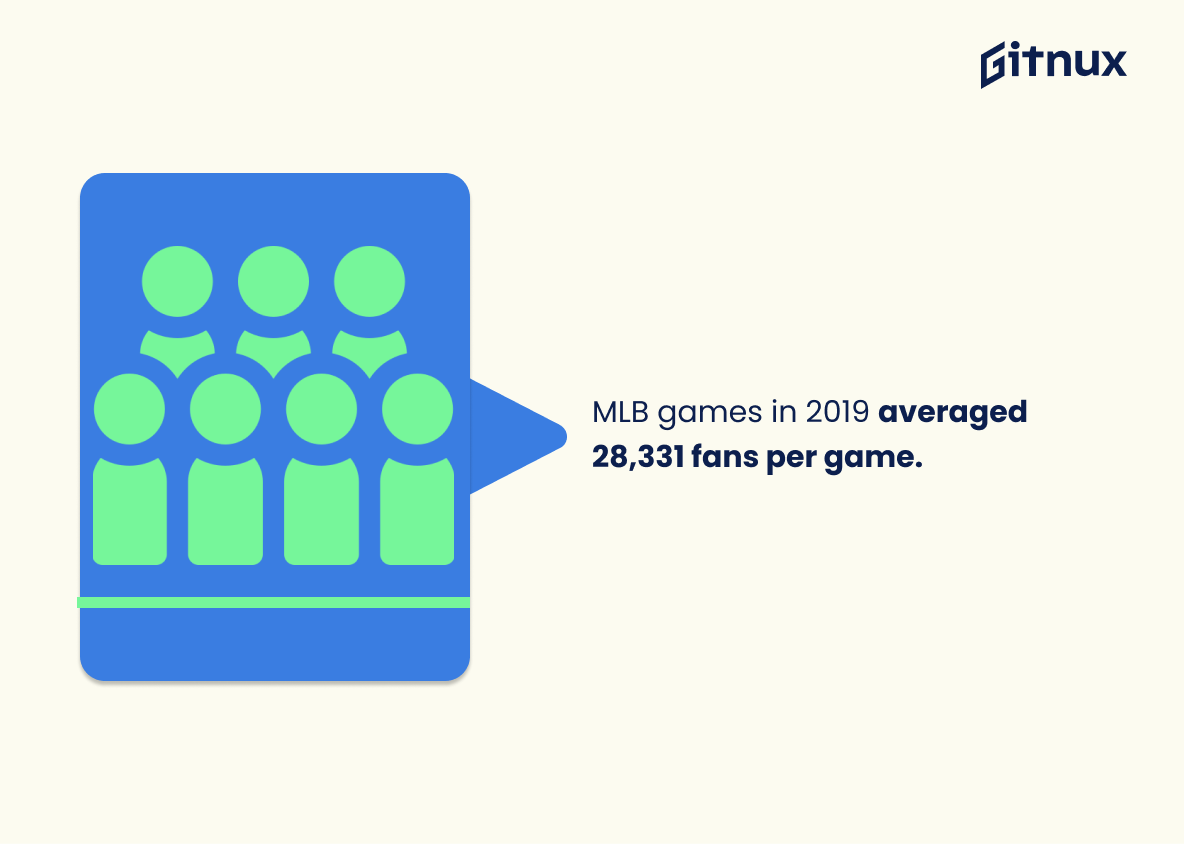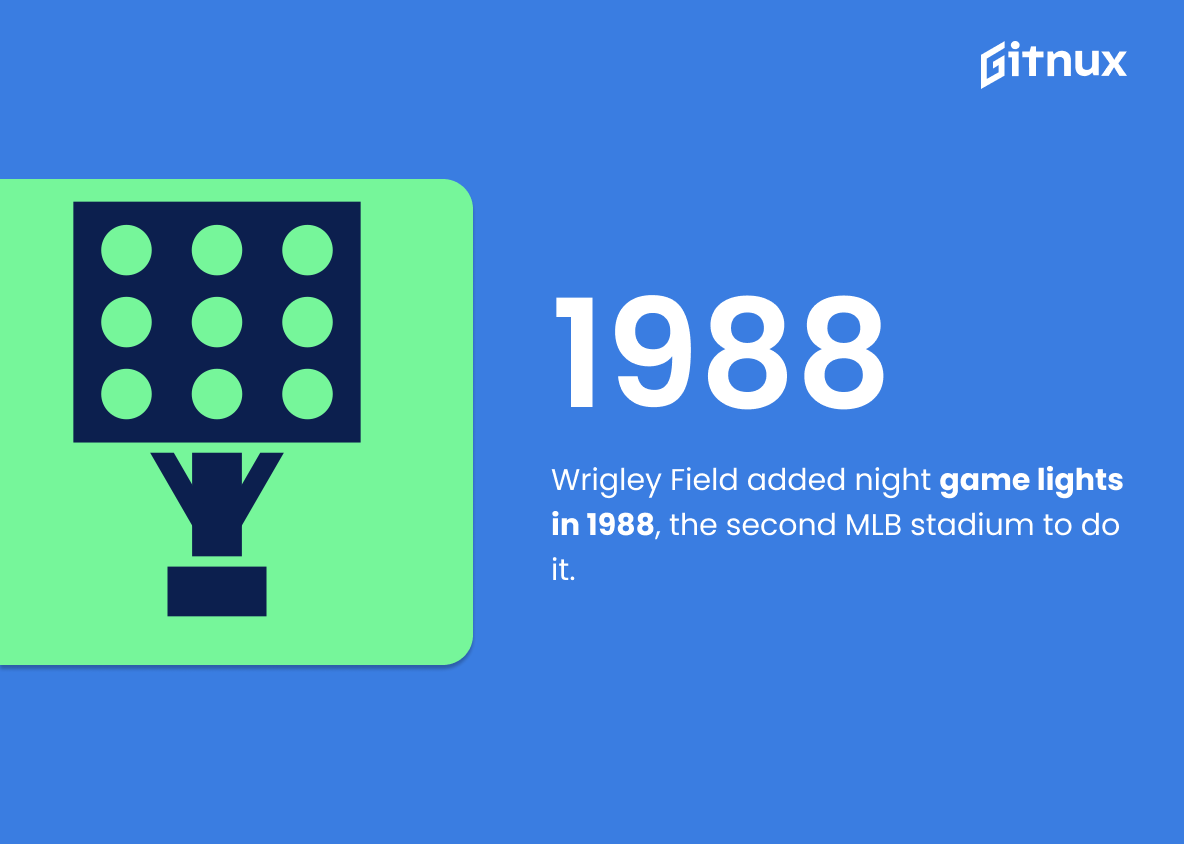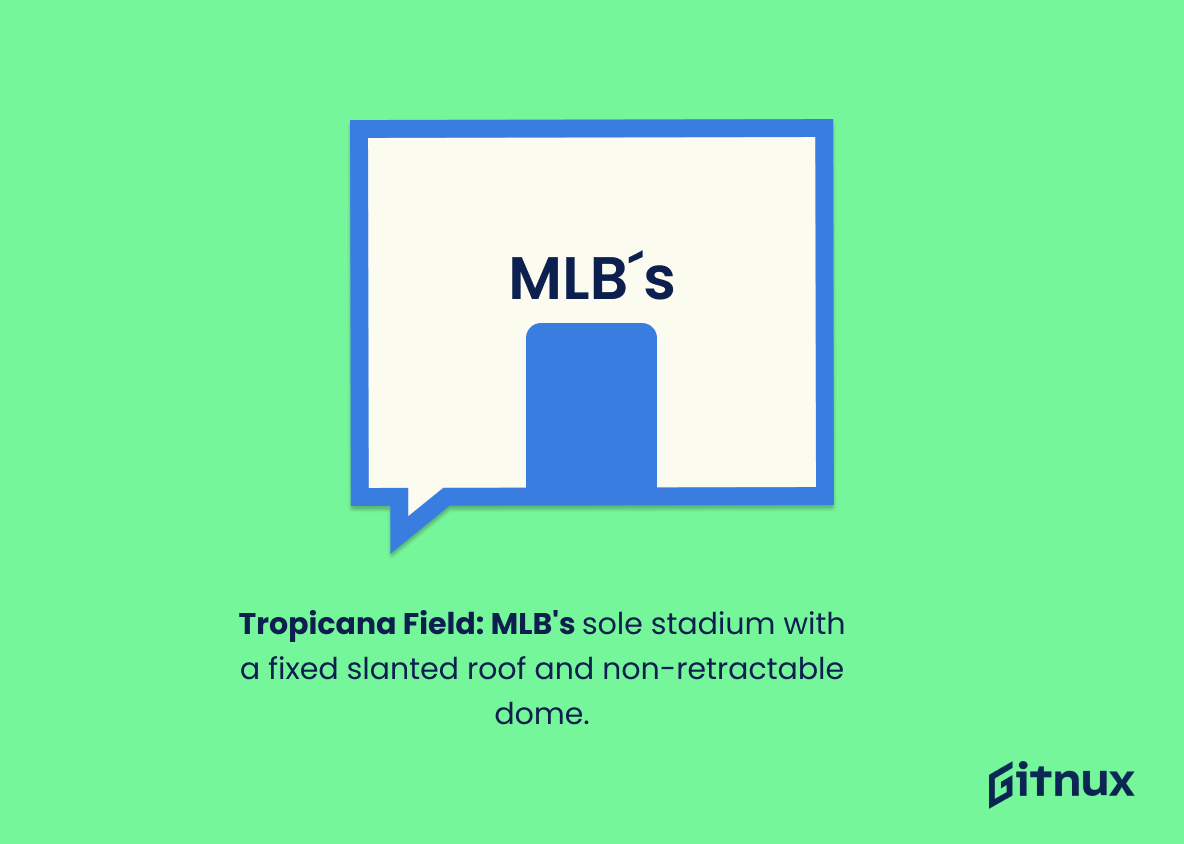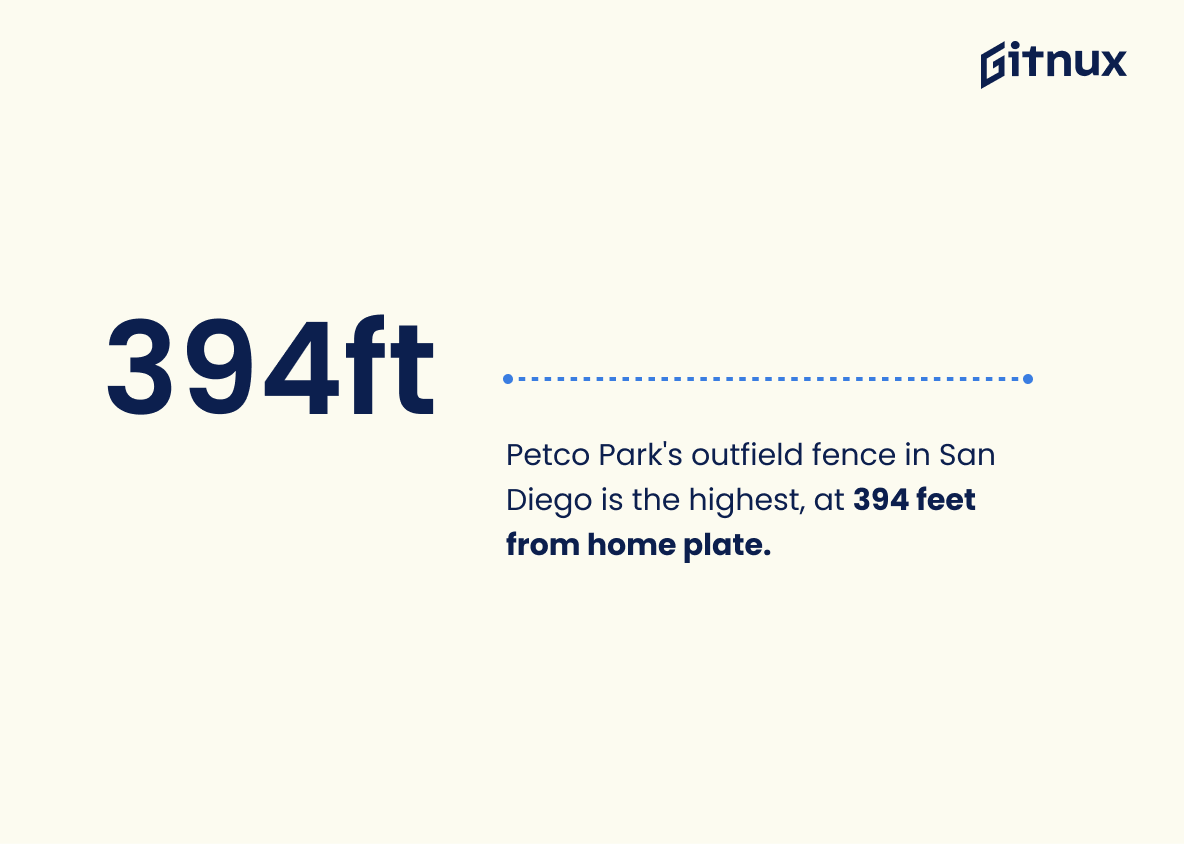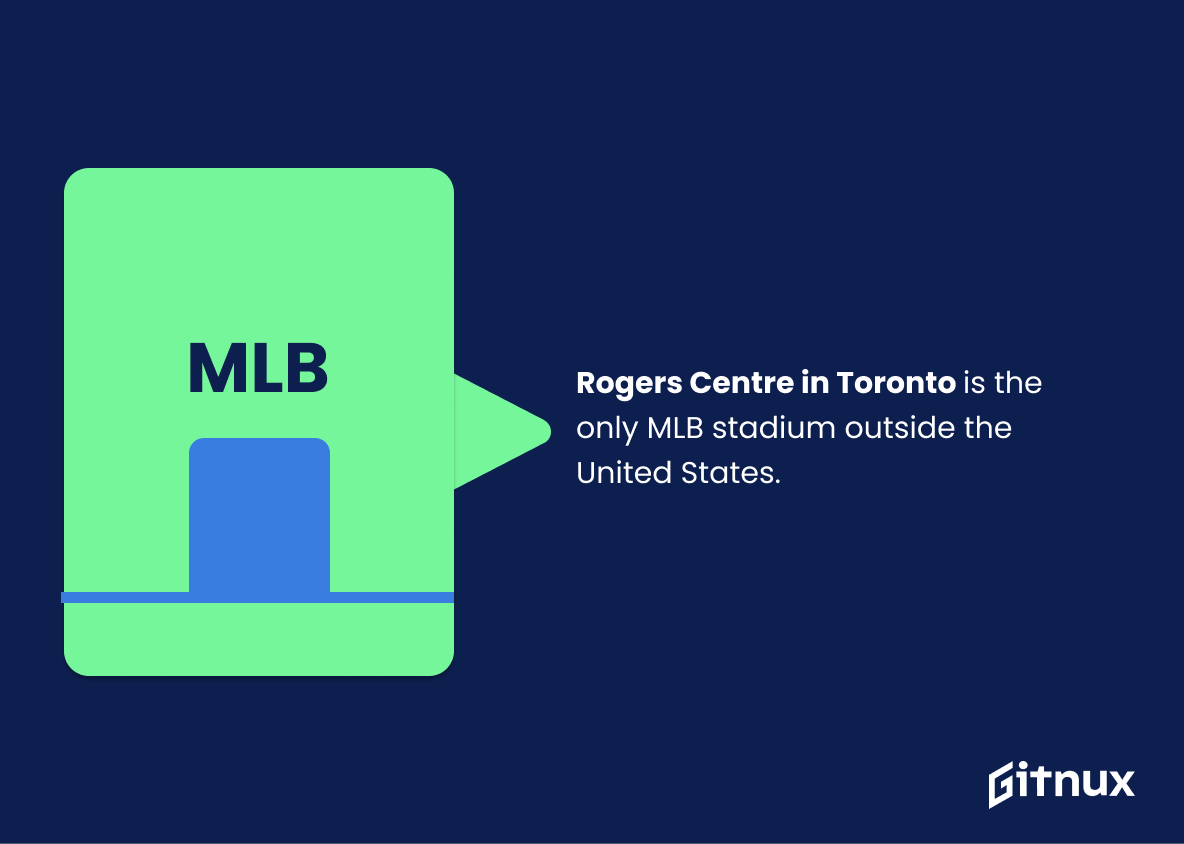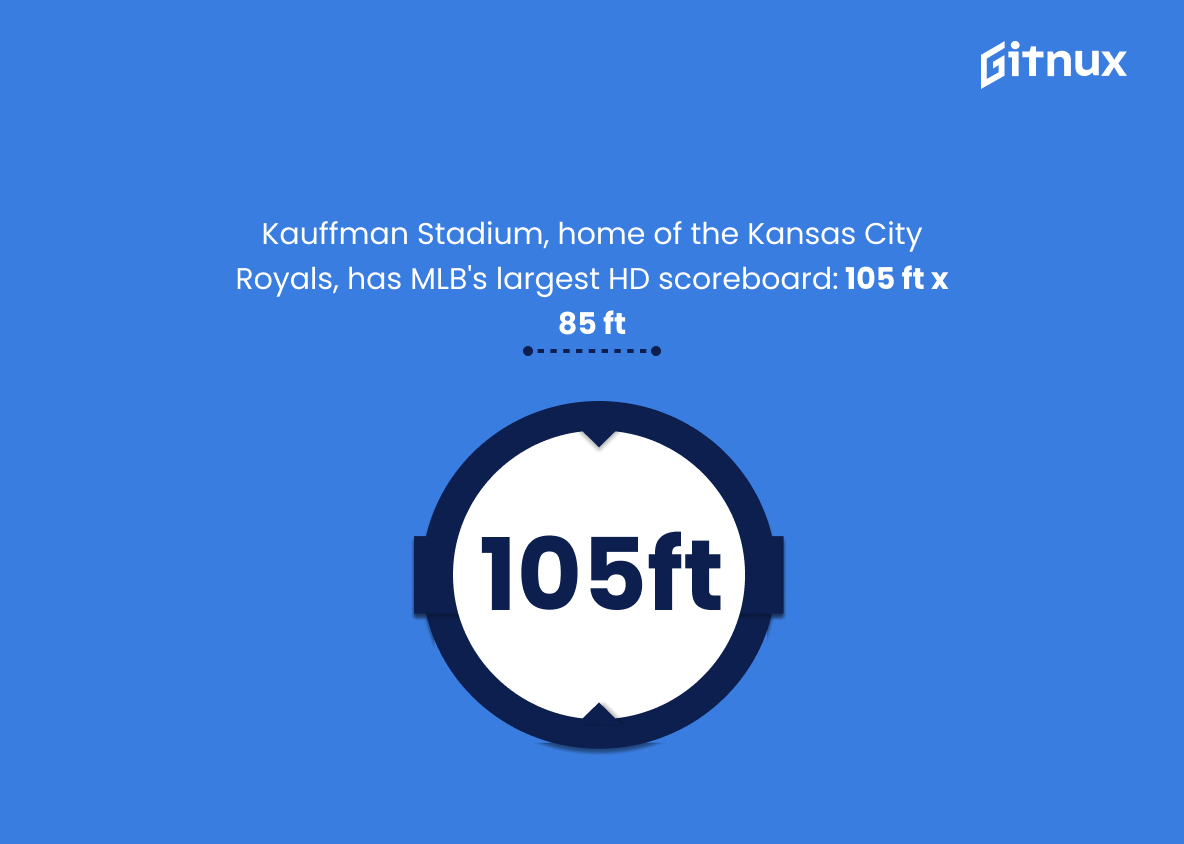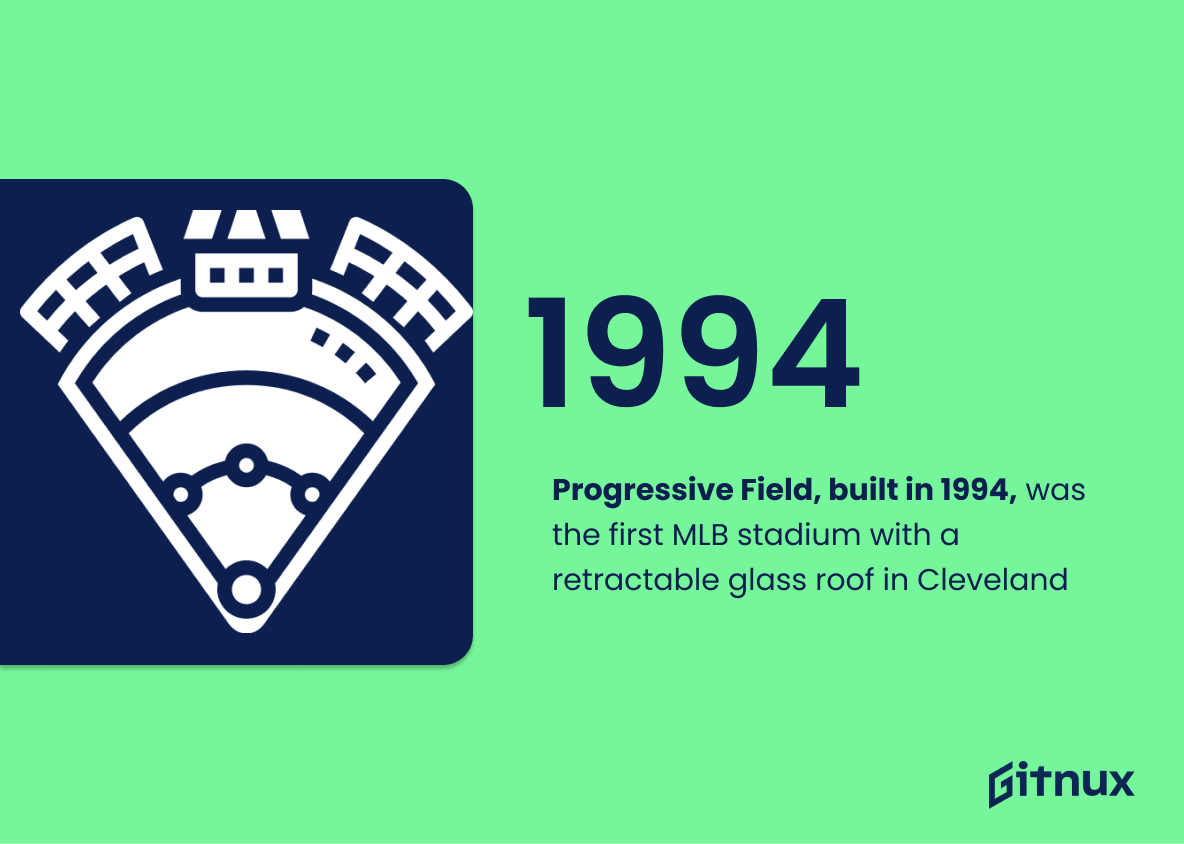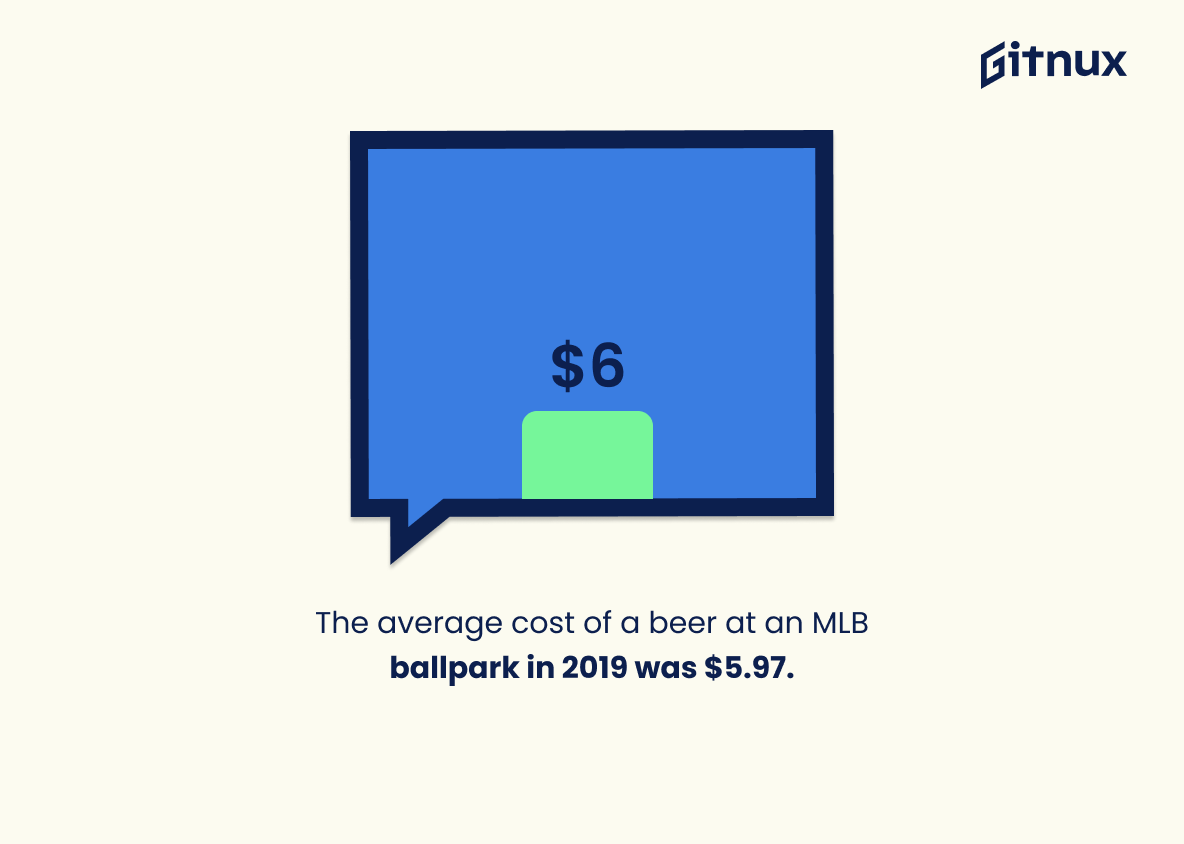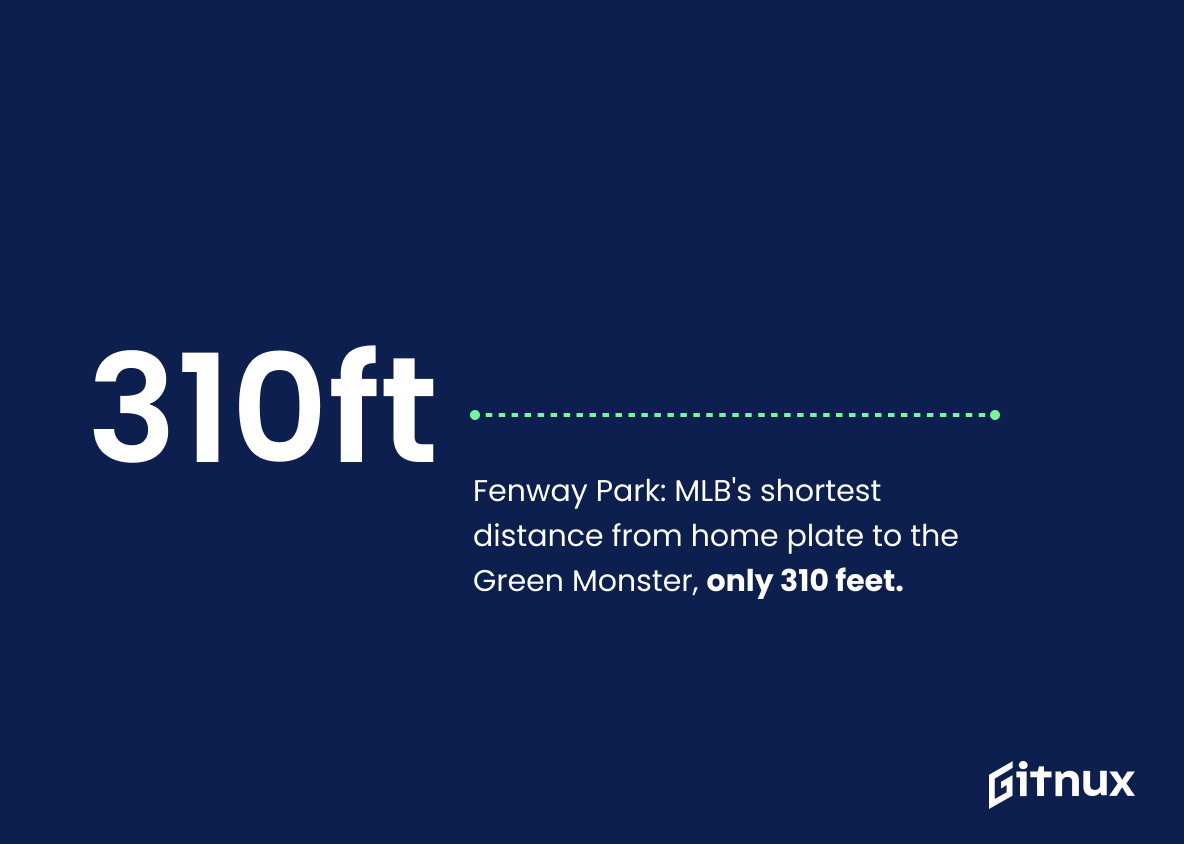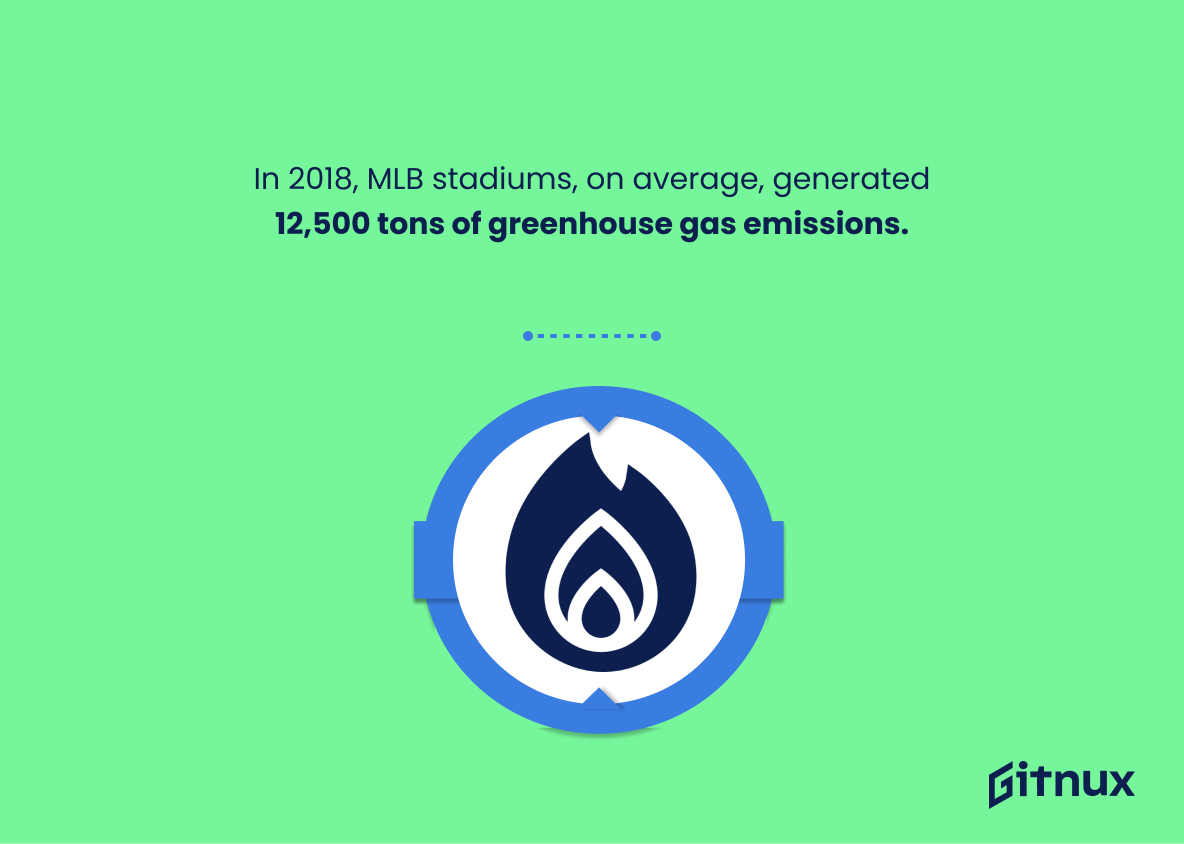From Fenway Park, the oldest MLB baseball stadium in America that opened its doors in 1912 to Minute Maid Park with one of the largest HD video boards in Major League Baseball, there are many fascinating facts and statistics about MLB stadiums. From seating capacity to cost of construction and from electricity usage to greenhouse gas emissions, let’s explore some interesting stats about these iconic venues.
Baseball Stadium Statistics Overview
Dodger Stadium has the highest seating capacity of any MLB stadium, holding 56,000 fans.
The fact that Dodger Stadium has the highest seating capacity of any MLB stadium speaks volumes about the popularity of the team and the sport in the area. It’s a testament to the loyalty of the fans and the success of the team that they can fill a stadium of such size. This statistic is a great indicator of the success of the team and the sport in the area.
The average MLB baseball stadium cost is over $600 million.
This statistic is a testament to the immense cost of constructing a Major League Baseball stadium. It speaks to the level of investment required to build a stadium that meets the standards of the MLB, and the financial commitment that teams must make in order to provide their fans with a quality experience. This statistic is a reminder of the high stakes involved in the business of baseball.
Oriole Park at Camden Yards was the first “retro” designed ballpark, opening in 1992.
The fact that Oriole Park at Camden Yards was the first “retro” designed ballpark to open in 1992 is a significant milestone in the history of baseball stadiums. It marked a shift away from the traditional, cookie-cutter designs of the past and ushered in a new era of stadium architecture that focused on creating a unique and immersive experience for fans. This pioneering design has since been adopted by many other teams, making it an important part of the baseball stadium landscape.
In 2019, an average of 28,331 fans per MLB game attended baseball stadiums.
This statistic is a testament to the enduring popularity of baseball. Despite the rise of other sports, the average attendance of 28,331 fans per MLB game in 2019 shows that baseball is still a beloved pastime for many. This statistic is a reminder of the timelessness of the sport and its ability to draw in fans from all walks of life.
The largest MLB baseball stadium by total area is Coors Field in Denver, Colorado, at 76 acres.
This statistic is a testament to the sheer size of Coors Field in Denver, Colorado, making it the largest MLB baseball stadium by total area. It serves as a reminder of the grandeur of the game of baseball and the stadiums that house it. It is a reminder of the sheer scale of the sport and the dedication of the teams and fans that make it possible.
Yankee Stadium has the highest number of luxury suites among MLB stadiums at 56 suites.
This statistic is a testament to the grandeur of Yankee Stadium, as it has the highest number of luxury suites among MLB stadiums. This speaks to the prestige of the stadium, as well as the commitment to providing a luxurious experience for its fans. It is no wonder that Yankee Stadium is one of the most beloved stadiums in the league.
Wrigley Field became the second MLB ballpark to install lights for night games in 1988.
This statistic is significant because it marks a milestone in the history of Major League Baseball. Wrigley Field was the second MLB ballpark to install lights for night games, which opened up a whole new realm of possibilities for the sport. It allowed for more games to be played in the evening, which meant more fans could attend and more teams could benefit from the increased revenue. This statistic is a reminder of how far the game has come and how much it has changed over the years.
Tropicana Field is the only MLB stadium with a fixed, slanted roof and a non-retractable dome.
This statistic stands out as a unique feature of Tropicana Field, making it a one-of-a-kind stadium in the MLB. With a fixed, slanted roof and a non-retractable dome, Tropicana Field offers a unique experience for baseball fans that can’t be found anywhere else. This makes it an interesting point of discussion in a blog post about Baseball Stadium Statistics.
Petco Park in San Diego has the highest outfield fence, measuring 394 feet from home plate.
The towering 394-foot outfield fence at Petco Park in San Diego is a testament to the stadium’s commitment to providing an exciting and challenging experience for baseball fans. With such a long distance from home plate, batters must be prepared to hit the ball farther than ever before in order to make it over the fence. This makes for an exciting game, as the outfielders must be on their toes to make the catch. Petco Park’s high outfield fence is a unique feature that sets it apart from other stadiums, making it a must-see destination for any baseball fan.
Rogers Centre in Toronto is the only MLB stadium outside the United States.
This statistic is significant in the context of baseball stadium statistics because it highlights the unique position of the Rogers Centre in Toronto. It stands out as the only Major League Baseball stadium located outside of the United States, making it a truly international destination for baseball fans.
The Kansas City Royals’ Kauffman Stadium has the largest HD scoreboard of any MLB stadium, 105 ft x 85 ft.
The sheer size of the Kansas City Royals’ Kauffman Stadium’s HD scoreboard is a testament to the team’s commitment to providing fans with an unforgettable experience. With a whopping 105 ft x 85 ft, it is the largest HD scoreboard of any MLB stadium, making it a must-see for any baseball fan.
Progressive Field in Cleveland was the first MLB stadium to have a retractable glass roof, built in 1994.
The fact that Progressive Field in Cleveland was the first MLB stadium to have a retractable glass roof, built in 1994, is a testament to the city’s commitment to innovation and progress. It speaks to the pioneering spirit of the city and its fans, and serves as a reminder that Cleveland is a leader in the world of baseball. This pioneering spirit is something that all baseball fans can appreciate and admire.
The average cost of a beer at an MLB ballpark in 2019 was $5.97.
This statistic is an important indicator of the overall cost of attending a baseball game. Knowing the average cost of a beer at an MLB ballpark can help fans budget for their trip to the stadium and plan accordingly. Additionally, this statistic can be used to compare the cost of attending a game at different stadiums, allowing fans to make an informed decision about where to spend their money.
Fenway Park has the shortest distance in MLB from home plate to left field’s Green Monster, at only 310 feet.
The fact that Fenway Park has the shortest distance in MLB from home plate to left field’s Green Monster is a testament to the unique atmosphere of the stadium. This short distance allows for more home runs to be hit, creating an exciting game experience for fans. Additionally, the Green Monster is a beloved feature of Fenway Park, and its close proximity to home plate adds to the charm of the stadium.
MLB stadiums use an estimated 150,000 kilowatt-hours of electricity per game.
This statistic is a stark reminder of the amount of energy consumed by MLB stadiums during a single game. It highlights the need for more sustainable energy sources to be used in order to reduce the environmental impact of baseball stadiums.
The Seattle Mariners’ T-Mobile Park has a unique retractable roof that can be closed in 20 minutes, covering 9 acres.
The fact that Seattle Mariners’ T-Mobile Park has a retractable roof that can be closed in 20 minutes is a testament to the stadium’s modernity and convenience. This feature allows fans to enjoy the game in any weather condition, making it a great place to watch a baseball game. Furthermore, the roof covering 9 acres is a testament to the stadium’s size and capacity, making it a great venue for large events.
In 2018, MLB stadiums, on average, generated 12,500 tons of greenhouse gas emissions.
The fact that MLB stadiums, on average, generated 12,500 tons of greenhouse gas emissions in 2018 is a sobering reminder of the environmental impact of the sport. This statistic serves as a stark reminder that baseball stadiums are not exempt from the effects of climate change, and that steps must be taken to reduce their carbon footprint.
Minute Maid Park in Houston has a 5,095-square-foot HD video board, one of the largest in MLB.
The sheer size of Minute Maid Park’s HD video board is a testament to the commitment of the Houston Astros to providing their fans with an unforgettable experience. With one of the largest video boards in Major League Baseball, fans can enjoy a crystal-clear view of the action on the field, as well as a variety of other content. This statistic is a great example of how teams are striving to make their stadiums more enjoyable for their fans.
Conclusion
From Fenway Park, the oldest MLB stadium in 1912 to T-Mobile Park with its unique retractable roof that can be closed in 20 minutes, baseball stadiums have come a long way. With an average seating capacity of 28,331 fans per game and 56 luxury suites at Yankee Stadium alone, it’s no wonder why these stadiums cost over $600 million on average. From Dodger Stadium having the highest seating capacity of any MLB stadium to Minute Maid Park boasting one of the largest HD video boards in all of Major League Baseball – there is something for everyone when visiting an MLB ballpark. Whether you’re looking for history or modern amenities like Coors Field being the largest by total area or Progressive Field being first to install a glass roof – each experience will be unique and memorable.
References
0. – https://www.baseball-reference.com
1. – https://www.nrdc.org
2. – https://www.environmentalleader.com
3. – https://www.stadiumsofprofootball.com
4. – https://www.statista.com
5. – https://www.ballparksofbaseball.com
